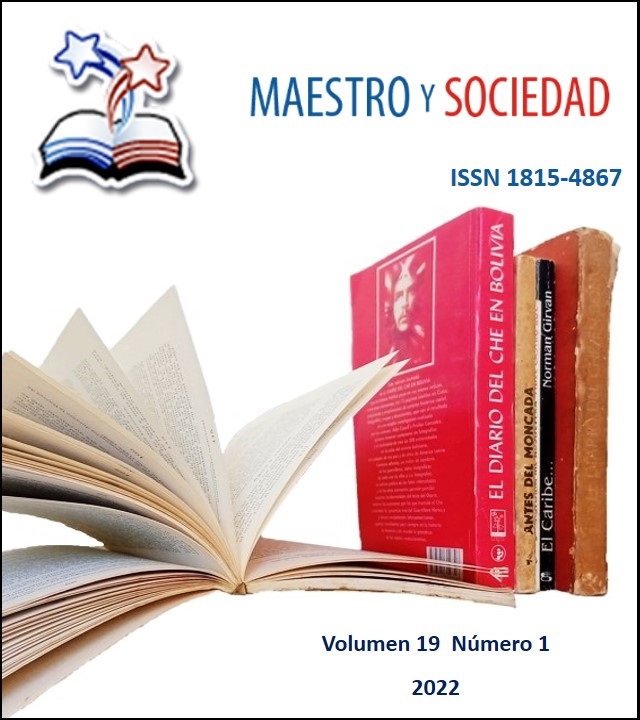Inclusive education: a view from theory
Array
Keywords:
inclusive culture, inclusive pedagogy, inclusive practice, normative requirement, intermediation modelsAbstract
This paper presents a theoretical exposition about inclusive education in Ecuador, from a critical study of the different sources consulted. First, key points of the regulations are presented, as well as a combination of theoretical elements and experiences related to the implementation of programs related to the inclusive practice in the Ecuadorian educational system. Finally, it reflects on the role of information and communication technologies in inclusive education, with emphasis on the treatment of students with special educational needs. It was possible to recognize, at the end of this research, that the effectiveness of any state policy on the subject, requires a paradigm shift at the institutional level and on the part of teachers, as protagonists of the process from their responsive work from the rupture of traditionalist schemes.
References
2. Black-Hawkins, K. (2017). Understanding inclusive pedagogy: Learning with and from teachers, En V. Plows y B. Whitburn (Eds). Inclusive Education: Making Sense of Everyday Practice (pp. 13-30). Rotterdam: Sense Publishers.
3. Fachal, A., Abásolo, M. J., & Sanz, C. V. (2019). Experiencias en el uso de TIC y rampas digitales en la enseñanza de informática a alumnos de educación terciaria con discapacidad visual o auditiva. In XXV Congreso Argentino de Ciencias de la Computación (CACIC).
4. Gallegos Navas, M. (2018). La inclusión de las TIC en la educación de personas con discapacidad: relatos de experiencias. Editorial Abya-Yala.
5. Graham, L., Berman, J., &Bellert, A. (2015). Sustainable learning: Inclusivepractices for 21st century classrooms. Melbourne: CambridgeUniversity Press.
6. Gómez-Trigueros, I. M., Ruiz-Bañuls, M., & Ortega-Sánchez, D. (2019). Digital literacy of teachers in training: Moving from ICTS (information and communication technologies) to LKTs (learning and knowledge technologies). EducationSciences, 9(4), 274.
7. Gómez-Zepeda, G., Petreñas, C., Sabando, D., &Puigdellívol, I. (2017). The role of the Support and Attention to Diversity Teacher (SADT) from a community-based perspective: Promoting educational success and educational inclusion for all. Teaching and Teacher Education, 64, 127-138.
8. Intxausti, N., Etxeberria, F., &Bartau, I. (2017). Effective and inclusive schools? Attention to diversity in highly effective schools in the Autonomous Region of the Basque Country. International Journal of Inclusive Education, 21(1), 14-30.
9. López, V., Gonzalez, P., Haquin, D. M., Costa, P. A., Sepúlveda, J. C. O., Redón, S. & Salgado, M. (2018). Políticas de inclusión educativa en Chile: Tres nudos críticos. Archivos Analíticos de Políticas Educativas= EducationPolicyAnalysis Archives, 26(1), 157.
10. MINEDUC. (2013). Acuerdo Ministerial Nº 0295-13. https://educacion.gob.ec/wp-content/uploads/downloads/2013/08/ACUERDO_295-13.pdf
11. MINEDUC. (2019). Educación especializada e inclusiva. https://educacion.gob.ec/unidad-de-apoyo-a-la-inclusion-udai/
12. Orozco Almario, I. C. (2019). La pedagogía inclusiva como enfoque emergente en las escuelas: Habla el profesorado de educación primaria. In III Congresso Internacional Envolvimento dos Alunos na Escola: Perspetivas da Psicologia e Educação, pp. 60-68. Instituto de Educação da Universidade de Lisboa.
13. Pavo, M. Á. H., & Patiño, M. G. C. (2020). Aportes de las reformas curriculares a la educación obligatoria en el Ecuador. Revista Scientific, 5(15), 362-383.
14. Rojas-Avilés, H., Sandoval-Guerrero, L., & Borja-Ramos, O. (2020). Percepciones a una educación inclusiva en el Ecuador. Cátedra, 3(1), 75-93.
15. Tedesco, J.C. (2011). Los desafíos de la educación básica en el siglo XXI. Revista Iberoamericana de Educación, 55, pp. 31-47. https://rieoei.org/historico/documentos/rie55a01.pdf
16. Westwood, P. (2018). Inclusive and adaptive teaching: Meeting the challenge of diversity in the classroom. Routledge.
Published
How to Cite
Issue
Section
License
This journal provides immediate open access to its content, based on the principle that offering the public free access to research helps a greater global exchange of knowledge. Each author is responsible for the content of each of their articles.



























 Universidad de Oriente
Universidad de Oriente 